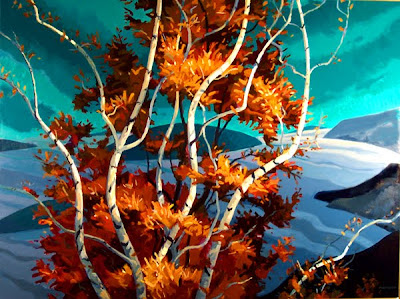You Can Go Home Again

Philip Koch, Northern Pines, oil on canvas, 36 x 72", 1985 For everyone there are memories of people, experiences, and places that just stay with you decade in and decade out. They can be sources of some of the deepest inspiration. Here's one of mine. It's not that it looks like my home. Rather it's a place where I feel most at home with myself. This is a pond in Acadia National Park in Maine. I fell in love with the spot and did a series of works there on location. They all sold and I found myself missing them. I got to thinking about them and without consulting any images of them started doing a version of the same spot out of my imagination and memory. Below is the result. Philip Koch, The Song of All Days, oil on panel, 36 x 72", 2008 Actually I like all the ways it departs from the earlier painting. It seems a more universal statement about experiencing the landscape. One gets busy with other things and though I always meant to go back to the original spot i...













